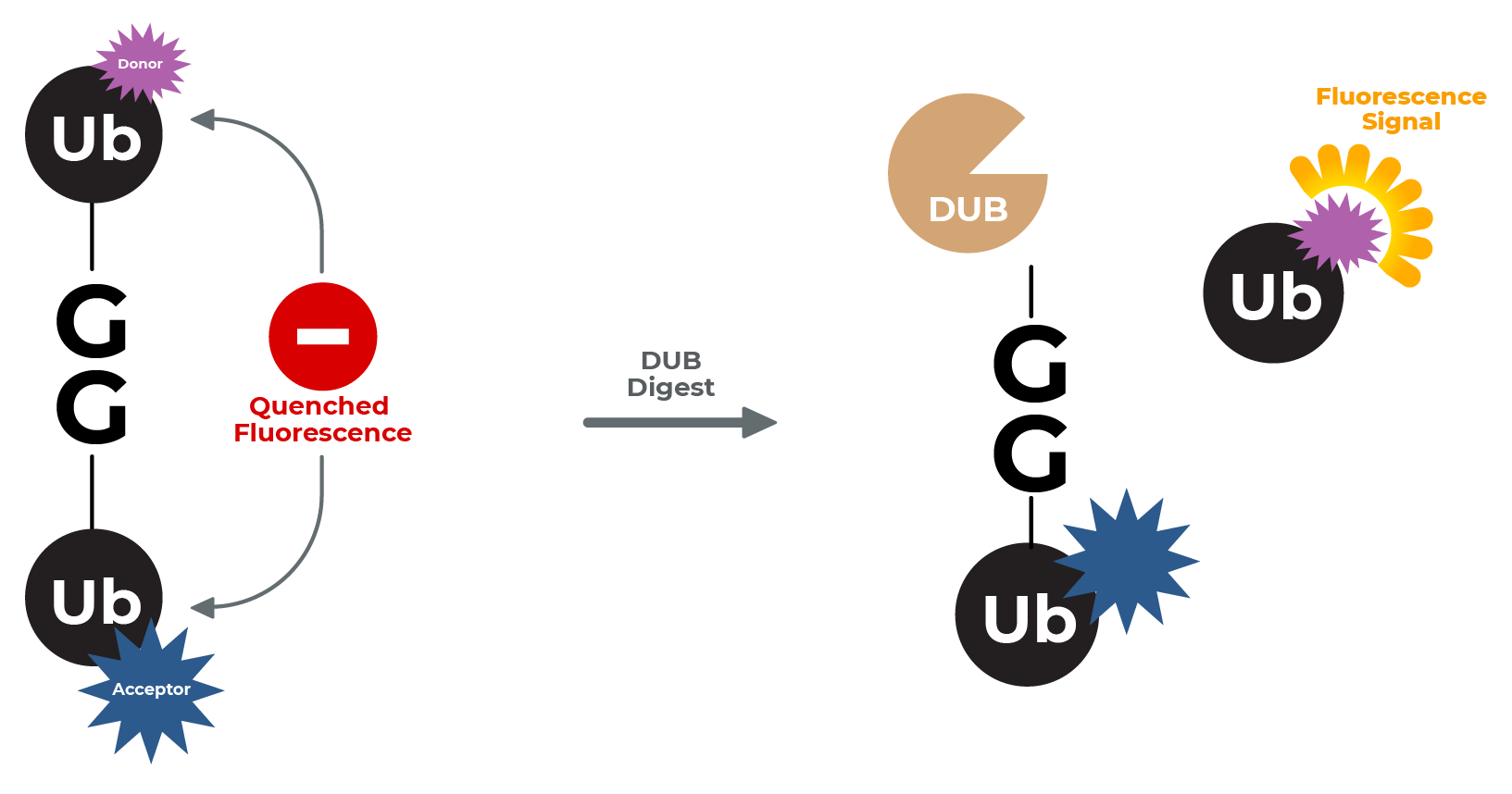LifeSensors’ di-ubiquitin substrates represent a new class of substrates for the continuous fluorescent measurement of true isopeptidase activity. The IQF assay service utilizes a pair of conjugated ubiquitin proteins where one ubiquitin carries the fluorophore silenced by the nearby quencher present on the adjacent ubiquitin. After DUB digestion, the quencher is cleaved from the Di-Ub and the fluorophore is now free to fluoresce and can be detected by a plate reader. This assay is physiologically relevant since the DUB cleaves a Ub-Ub bond! The assays are designed to study DUBs that interact with -K48, -K63 and -K6 linked di-ubiquitin. C-terminus of wild type ubiquitin is conjugated via an isopeptide bond to lysine 48 (K48) of a second ubiquitin molecule with the resultant diubiquitin forming an internally quenched fluorescent FRET pair (IQF).
There are multiple IQF Di-Ub variants that all have remarkable differences. In the case of K48- and K63- their 3D structure varies and can be used to measure various DUBs. For this reason, Lifesensors has created subpanels of IQF Di-Ub substrates with each linkage. Because each DUB is likely to recognize and cleave substrates with unique steric considerations, these subpanels vary in location of reporter fluorophore and quencher.
Our DUB screening assays include assay development where we empirically evaluate activity of DUB against the panel of IQF DiUb substrates to select the optimal fluorophore/quencher pairing.

